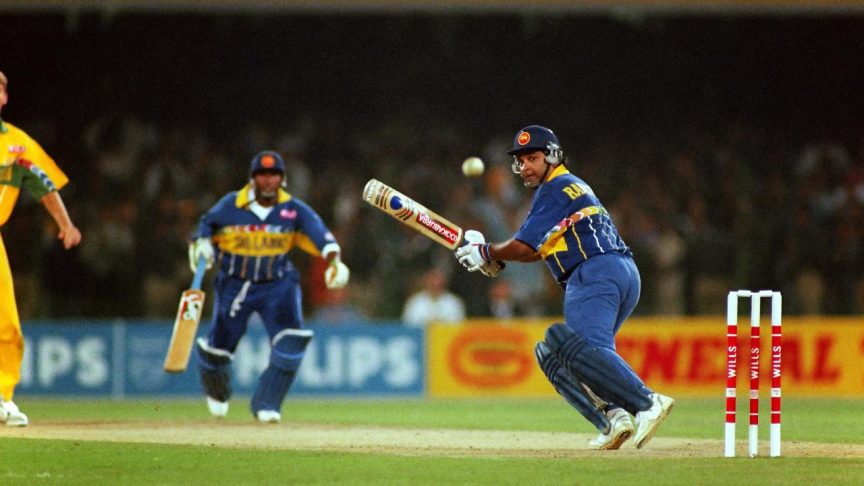For long periods of time since its admission to the Test playing ranks in 1981, Sri Lanka has been regarded condescendingly by the major cricketing nations. Sri Lanka has never played a Test series consisting of more than three matches. For what seemed like decades after admission, England would not grant them more than a single Test when they toured. Now, when figures like Ravi Shastri and Graeme Smith talk ominously about Test cricket being confined to six teams, you can be sure that Sri Lanka is not guaranteed to be one of them.
Yet Sri Lanka’s achievements at the top table have been remarkable. In Muttiah Muralitharan, they have produced the highest wicket-taker in the history of Test cricket. No left arm bowler has taken more wickets in Tests than Rangana Herath. No right-handed batter has made a higher score in Test cricket than Mahela Jayawardene’s 374 against South Africa in Colombo in2006. No left-handed batter has made more centuries in Test cricket than Kumar Sangakkara’s 38. Sri Lankan pairings have made the two highest partnerships in Test history: Sangakkara and Jayawardene’s 624 for the third wicket against South Africa in Colombo in 2006, and Sanath Jayasuriya and Roshan Mahanama’s 576 for the second wicket against India inColombo in 1997-98. In one day internationals – of which, to be fair, Sri Lanka have played more games than anyone except India and Australia – not only is Murali the leading wicket-taker, but three other Sri Lankans – Charminda Vaas, Lasith Malinga and Jayasuriya – are in the top eleven. Sangakkara, Jayawardene and Jayasuriya are among the top five run scorers in ODIs. Malinga was the first bowler to take a hundred wickets in T20 internationals, and remains the leading wicket taker in the Indian Premier League.
These are phenomenal achievements. But there is a good case for saying that the most significant and influential figure in Sri Lanka’s modern cricket history is the statistically comparatively underwhelming Arjuna Ranatunga.
It would be wrong to underrate Ranatunga’s skill as a batsman. As a young man he was an audacious stroke maker and right to the end he was impressive, one of those players whose presence made a statement. “ His very walk to the crease “ said Peter Roebuck, “slow, serene, yet somehow abrasive – seemed to calm comrades almost as much as it irritated opponents”.
A solid left-hander with a low centre of gravity, he played in his country’s inaugural Test against England in 1981 while still at school, aged 18, and scored Sri Lanka’s first Test half century. After that he was pretty well a fixture, usually batting in the lower middle order, able to adjust his game to the needs of the side. Always quick on his feet even in his later years, he was adept at threading the ball into the gaps in the field. “Alert, crafty and quick” was Roebuck’s summary.
Crafty is a word that could almost have been invented for Ranatunga. It was as his country’s captain for a decade through the 1990s that he will be most remembered. His achievements in that role were very remarkable. For much of the time the country was riven by a ghastly civil war, yet Ranatunga was able to give the people something to enjoy and to an extent, unite around (Murali, of course was a Tamil). The great triumph, of course , was the to win the 1996 World Cup, held in the subcontinent. But in Test cricket too, Sri Lanka held their own. They started to beat the better sides, not all the time but enough to show they had turned a corner. They weren’t a pushover any more.
Ranatunga was an outsider and an iconoclast. When he became captain, Sri Lankan Test cricket was almost as exclusive a preserve as English Test cricket is now. Almost all the leading players came from the top schools in Colombo. Ranatunga didn’t and he ensured that the field was broadened. Jayasuriya came from a little fishing village on the south coast; Murali was the son of a Kandy confectioner.
With some sides, you look at them on the field and you are not sure who is in charge. Ranatunga’s Sri Lanka was not one of those sides. He was the boss and everyone knew it. He could probably have started an argument if he been standing in splendid isolation at third man. English commentators had no choice but to compare him with Napoleon. And, like the Emperor, he transformed his nation. As is often the way with these things, Sri Lanka became a bit like him, bristling and aggressive rather than polite and submissive.
Of course he was deeply unpopular outside Sri Lanka. “Not everyone’s cuppa tea”, said Mike Atherton. “Off the Christmas card list”, said Steve Waugh (Ranatunga is a Buddhist). “Cocky and confrontational”, said Shane Warne , “We never got on: I wonder why”.
Australia was a special case because of the saga of Murali and the umpires. Ranatunga held up play for about ten minutes after Murali was no-balled for throwing in a one day international against England in Adelaide. The Australians hated that. Ironically, the captain whom Ranatunga most resembled was the Australian Ian Chappell. Each never took a backward step, was utterly loyal to his players and knew that being captain was not a popularity contest.
My favourite Ranatunga match is not the World Cup final In Melbourne, though he played a vital role in that epic victory. It is the one-off Test against England at The Oval in 1998, which Sri Lanka won by an innings, with Murali taking 16 wickets. Ranatunga had won the toss and put England in; they made 445.
After the game Ranatunga said batting second was the only way Sri Lanka could win, because if England had had to follow on Murali would have got too tired.
Maybe that was true. Maybe he just got lucky. Either way, it was crafty.
Share this Post
